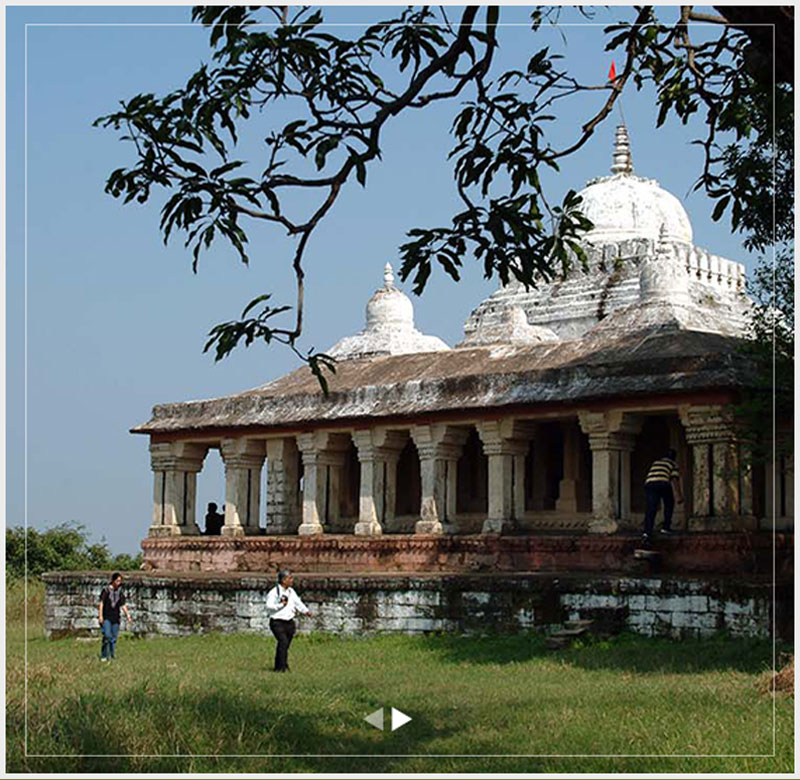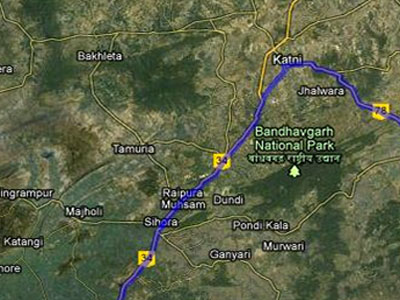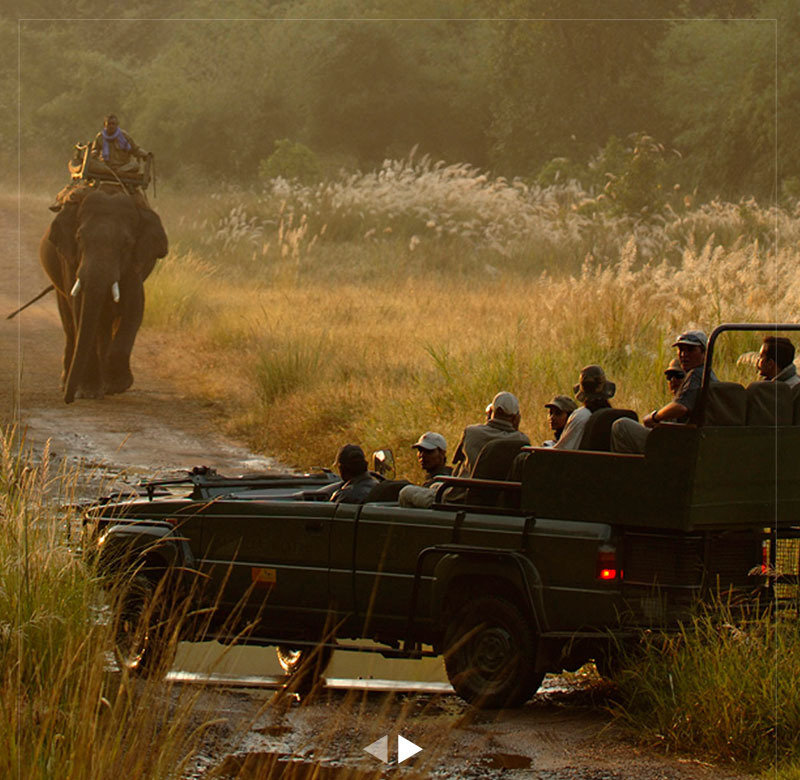The word “rann” means a salty desert, and that’s exactly what it is – a vast expanse of salt flat that stretches for miles in the Kutch region of northern Gujarat. Stark and serene, the Rann of Kutch is one of the most unique landscapes you will ever see in your life. Once an arm of the Arabian Sea that has been leached dry over time, some parts of it are actually below sea level.
Come monsoon, and the region turns into a gigantic marsh. Grassy outcrops of high ground, called bets, rise above the water, which support several rare and exotic species. Once the water recedes, it leaves behind a dry and fissured clay terrain that is abundant in salt-crystals that give it a surreal hue (especially on a moonlit night).
The fresh waters of Rajasthan’s rivers meet the saltwater tides of the Gulf of Kutch in the Rann. These waters are the ideal breeding ground for crustaceans and tiny fish, which are fodder for birds. In winter, the Rann is populated by over two hundred migratory bird species including the greater and lesser flamingo, demoiselle cranes, and pelicans. The Little Rann of Kutch is one of the last remaining habitats of the Asiatic Wild Ass or Ghorkhur.

The Rann of Kutch is situated in the North West of Gujarat and stretches all the way up to the Indo-Pakistan border.

Topography: The Little Rann of Kutch, the Great Rann of Kutch and the Banni Grasslands together cover an area of 30,000 square kilometers of salt marsh and grassland. For most of the year, the marsh is a dry clay terrain with massive fissures that run through it, almost like an abstract pattern, that is full of salt crystals. Small grassy outcrops are the dwelling ground of the Rann’s wildlife.
In Season: The park is open from 16 October until 16 June each year. It closes during the monsoon season from 17 June until 15 October.
Note: The park is closed to tourists on Wednesday afternoons as well as all day for the Diwali and Holi holidays.
The Asiatic Wild Ass is a highly endangered member of the equine species. It is related to its Tibetan cousin, the Kiang, but can be told apart thanks to a dark stripe that runs down its back. The Rann of Kutch is also home to a unique species of camel that can swim in deep seas. Known as the Kharai or Dariyataru, they survive solely on fodder found near mangrove swamps.
The still desert night is pierced by howls and cries, which can send a shiver up your spine. The Little Rann of Kutch is home to another highly endangered species, the Indian Wolf. Hyena and Jackal calls come with the territory, while jungle cats prey on small desert rodents. Hard to spot because of the dusty camouflage of their coats, the desert fox is another unusual small predator that inhabits these parts of the western subcontinent.
The Wild Ass is a rare sight to behold, a handsome brown and white creature that looks a little like a zebra. Often seen in herds, it will gallop across your line of vision in a blur – sometimes as fast as 60 kmph. The bets are also inhabited by other endangered species such as the Black Buck (Indian Antelope), the Nilgai (Blue Bull) Antelope, and the Chinkara deer (Indian Gazelle). Several small desert rodents and reptiles can be found among the fissures and cracks in the landscape.
As you look into the distance, shading your eyes against the glare of harsh sunlight shining off the salt crystals, don’t be surprised to see a shock of pink rising up into the air. The Rann of Kutch is known for its winter migration of birds from as far north as Siberia. The most beautiful among these are thousands of Greater and Lesser Pink Flamingos that flock to these lonely marshes annually. From demoiselle cranes to spoonbills, various breeds of duck, ibises as well as resident plovers, warblers, shrikes and many more, the Rann of Kutch is the ultimate birder’s paradise.
It is also home to several raptors including several species of eagle, falcon, harriers and buzzards. The migratory Houbara Buzzard is a rare and beautiful creature that can be seen here. In the monsoon, the marsh becomes a breeding ground for birds like floricans and painted storks.
Nearest railway stations are at:
Nearest airports are at:

Game drives by jeep – you can opt to book your own jeep or share with other passengers.

Visits to local tribal village settlements – watch artisans and craftsmen create beautiful leather crafts, jewelry, pottery, and embroidery. Learn about the tribal way of life and how they live in traditional “Kooba” dwellings to protect against the elements.

The best time to visit is November to March.
The temperature in the Rann of Kutch is very extreme. The winters are extremely cold and the wind chill factor is high due to the vast openness of the land. The air is also very salty. The summers are extremely warm and the glare of the summer sun on the salt crystals can be blinding.
Rann Riders –
What we love…eco-friendly accommodation that reflects the style of local tribal settlements in the region.
The Royal Safari Camp –
What we love… modern comforts with an ethnic touch.
Permits to enter the park are only available once you are physically present and cannot be secured in advance. Little Rann of Kutch supports a variety of wildlife including the ‘Gudkhur’ (Asiatic wild ass) that is not found anywhere else. The Wild Ass is a handsome chestnut brown member of the equus genus (horse family). Capable of reaching high speeds when galloping across the Rann, the wild ass is usually seen in small herds. The elegant blackbuck (Indian antelope), Nilgai or blue bull (India’s largest antelope) and the graceful Chinkara (Indian gazelle) are other mammals seen at the bets. The main carnivores of the Little Rann of Kutch are the endangered Indian wolf, desert fox, Indian fox, jackals, desert and jungle cats, and a few hyenas. Smaller mammals like hares, gerbils and hedgehogs, and reptiles like spiny tailed lizard, monitor, red and common sand boa, saw-scaled viper, cobra, dhaman (Indian rat snake), are also be seen during excursions in the Rann. Pack your cameras. The Rann of Kutch is one of the most ethereal landscapes in the world – not only is it prolific in bird and animal life, it is a land inhabited by several tribal communities. You will most probably come across these men and women in full tribal dress, decked out with silver jewelry and embroidery.
Accommodations in the Rann of Kutch have a distinctly ethnic feel to them. They are run by local families and communities and make for a highly experiential stay.